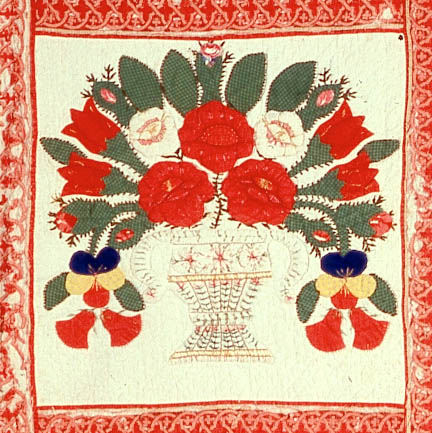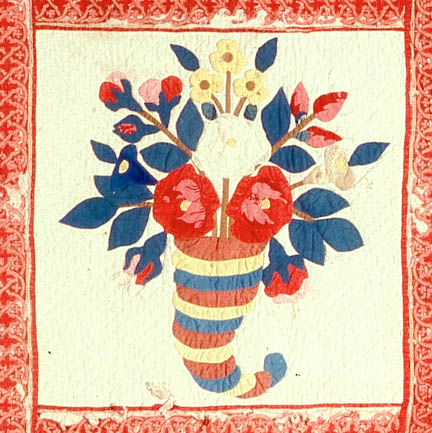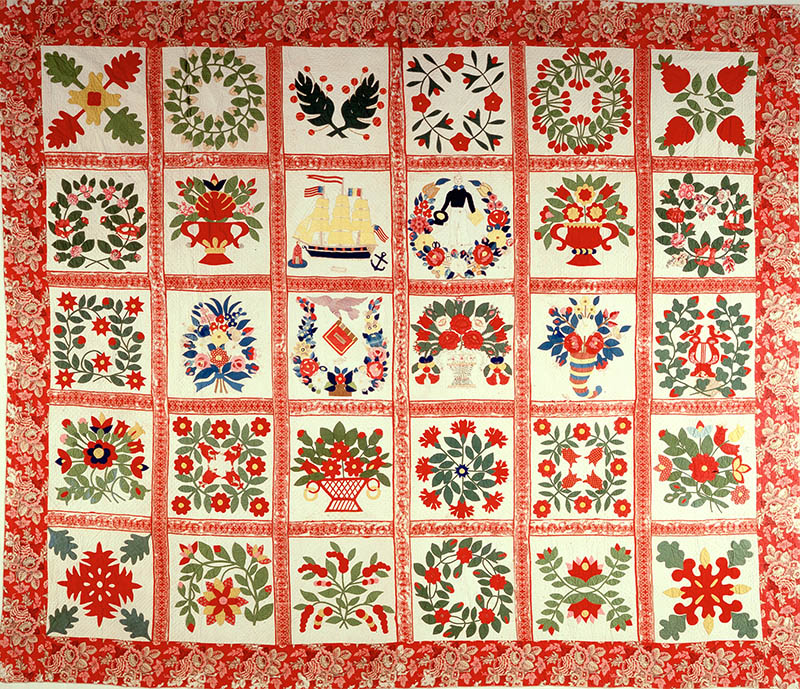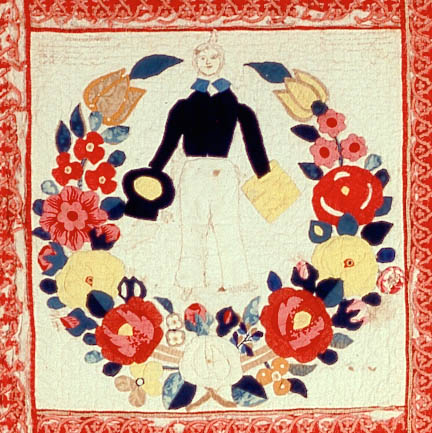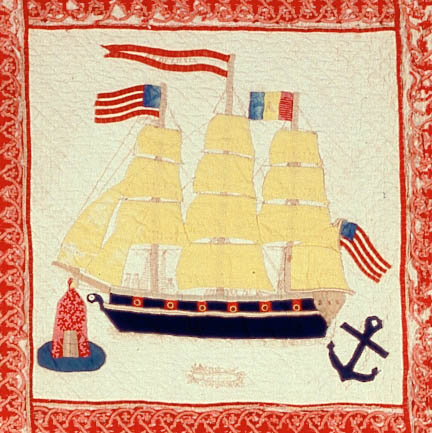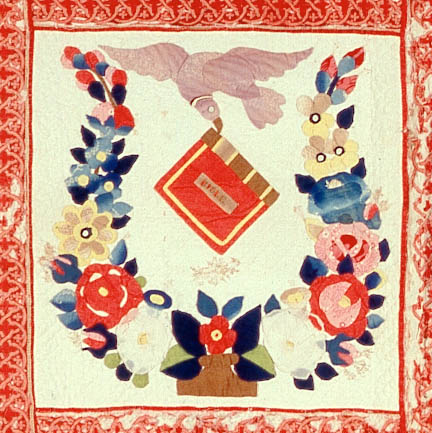One of the beauties in our collection is 174 years old, made from colorful fabric, is both decorative and useful, and was created so it could be given away in appreciation for a kind act. Today I offer our Baltimore Album Quilt for your viewing pleasure.
Quilts made with the distinctive Baltimore Album designs were first seen in and around Baltimore, Maryland in the 1840s. Unlike traditional quilts, which were created with fragments of worn out clothes or leftover pieces of fabric, album quilts were made with newly purchased fabric that was readily available in the prosperous port cities. The designs were also different. Instead of a single or repeating pattern, each section or “block” of the quilt contained an intricate appliqué using red and green as the predominant colors. Designs included floral sprays, animals, patriotic and fraternal motifs, people, cornucopias and ships, often with embroidered details. The quilts were large, eye-catching and they showcased the maker’s needlework skills.
Album quilts owe their name to the 1820s tradition of having an album in the family parlor so guests could sign their names and inspirational phrases. Magazines of the time offered suggestions and poems that could be used for this purpose. Add this custom to the availability of indelible inks that made it possible to leave permanent marks on fabric and the album quilt was born.
Many of the quilts were presentation pieces, given to commemorate a special occasion or given to notable people. The intricate hand sewing required for each block was very time consuming, so presentation quilts were frequently made by a group of contributors and each woman would sign the block or blocks she offered to the project. It was common to make extra blocks so well wishers could add their sentiments and to include names, poems, dedications to the recipient and ship on the fabric. The blocks were sewn together and the quilt was finished with a backing, middle layer or “batting” which was usually cotton, a binding around the edges and then it would be “quilted” with small stitches that held the front and back firmly together.
What makes our quilt so interesting is that at least five of the blocks have been attributed to a particularly skilled quilter, Mary Heidenroder Simon. Historians consider her work to be of the highest possible quality.
The piece measures 105 x 120 inches and contains 30 appliquéd blocks. Some are used as a focal point to the quilt, including one with a three masted schooner named “Andalusia” and signed by “M.A. Crofsin”, one containing a full length portrait of sailor Peter Jason holding a document inscribed “Come Sign the Pledge” and the one signed by “Clarissa Cook” showing a dove holding a bible in its beak.
The quilt was presented to Joshua Young in 1840 in appreciation of his efforts to establish a Seaman’s Bethel (chapel) in Centerville, Maryland. The story behind the quilt says that Young put a bible in the sea chest belonging to Peter Jason before the young man sailed on the “Andalusia”. When Peter became ill at sea, he began to read the book and this led to his joining the church and studying for the ministry after the ship returned to Maryland. Before the presentation of the quilt to Young, Peter inscribed the block representing him with a poem. It reads:
REMEMBRANCE
The time may pass
And years may fly
And every hope decay
And die.
And every joyful moment set
Yet thee I never can forget.
Tho distant yet
Thus still my heart
From love and The
Will never part
I’ll bless the day
That we first met
Yet never thee I will forget.
Peter Jason
Baltimore, Maryland
1840
Thanks for reading and stay tuned for more from Hidden In The Hold.
